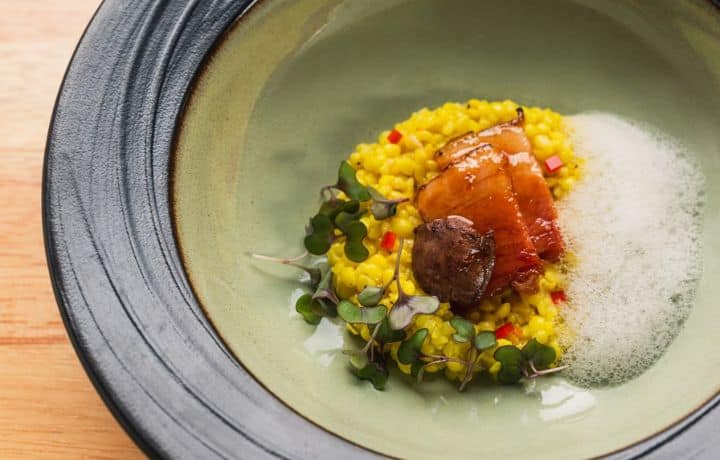

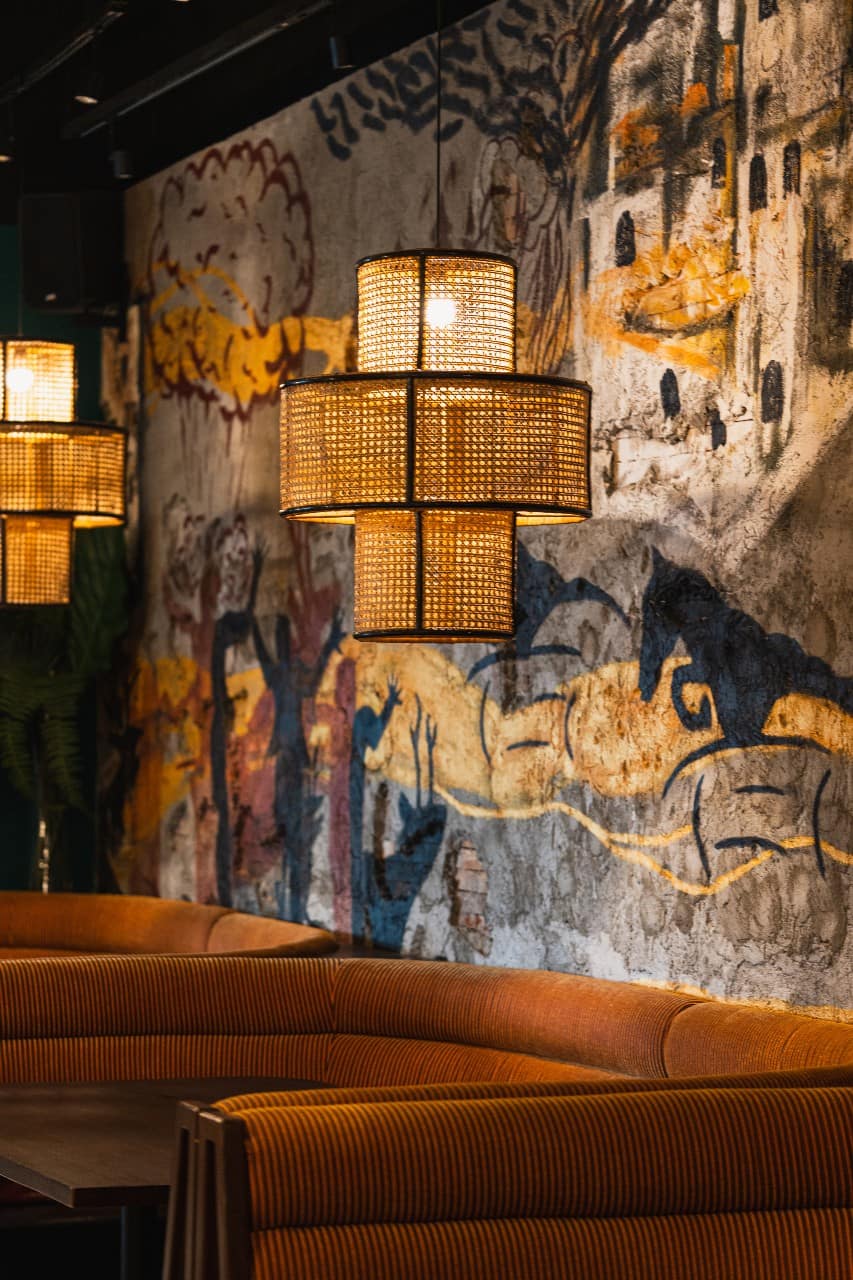
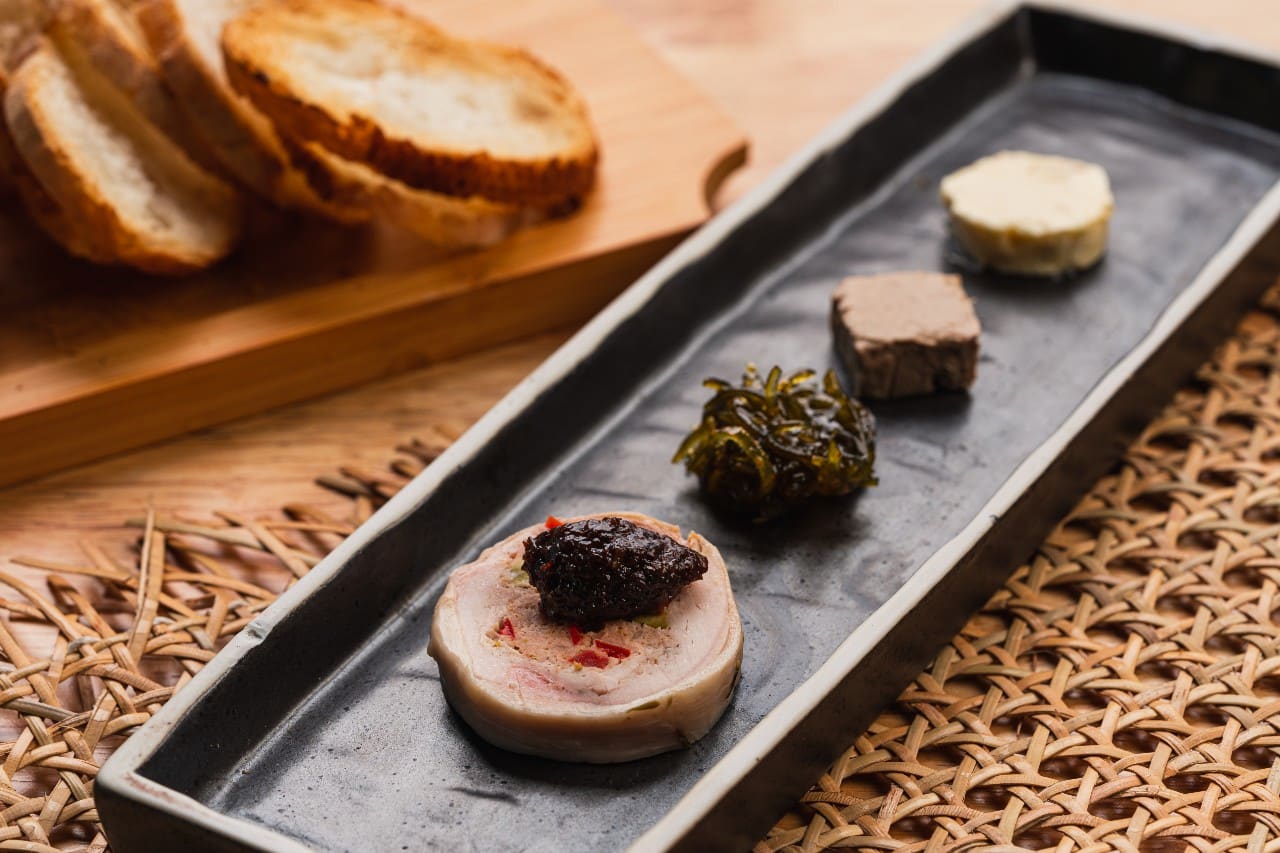
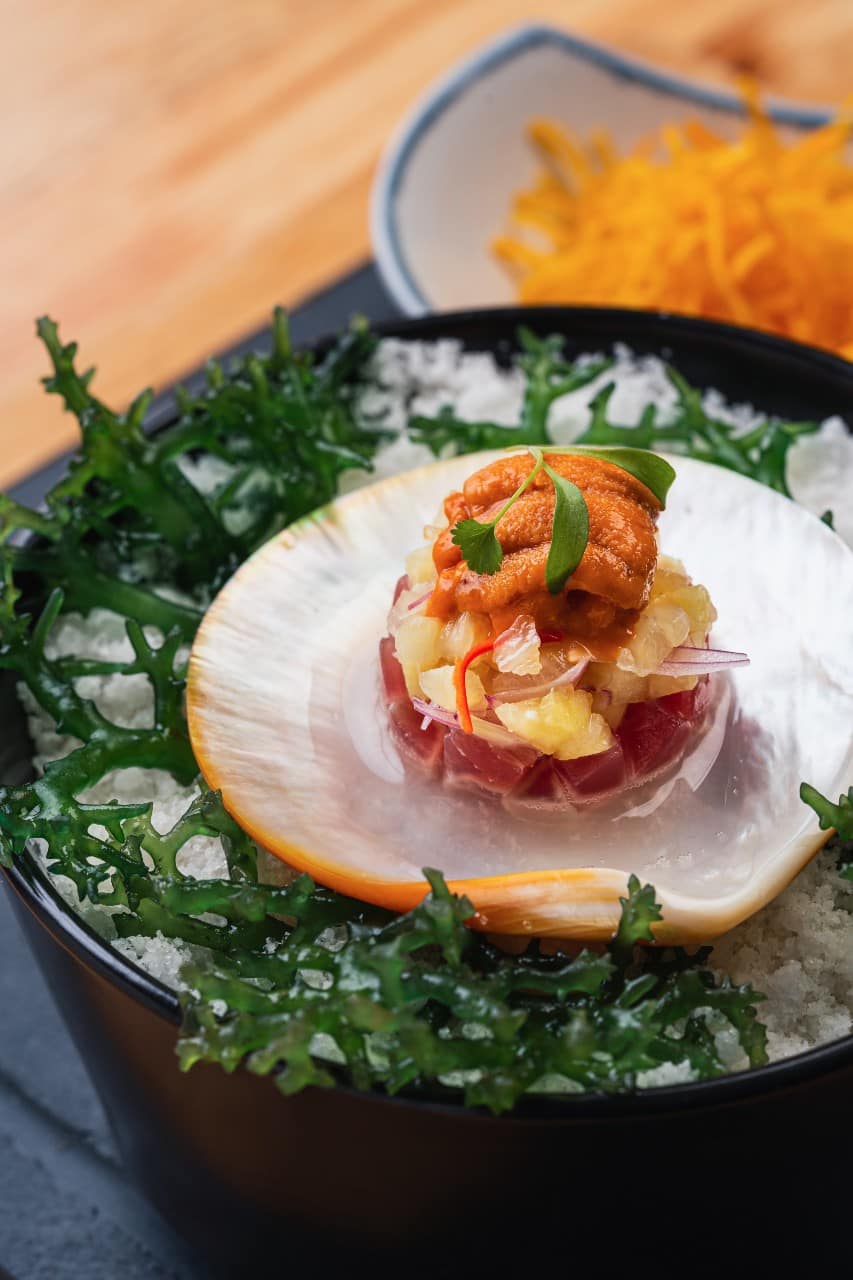
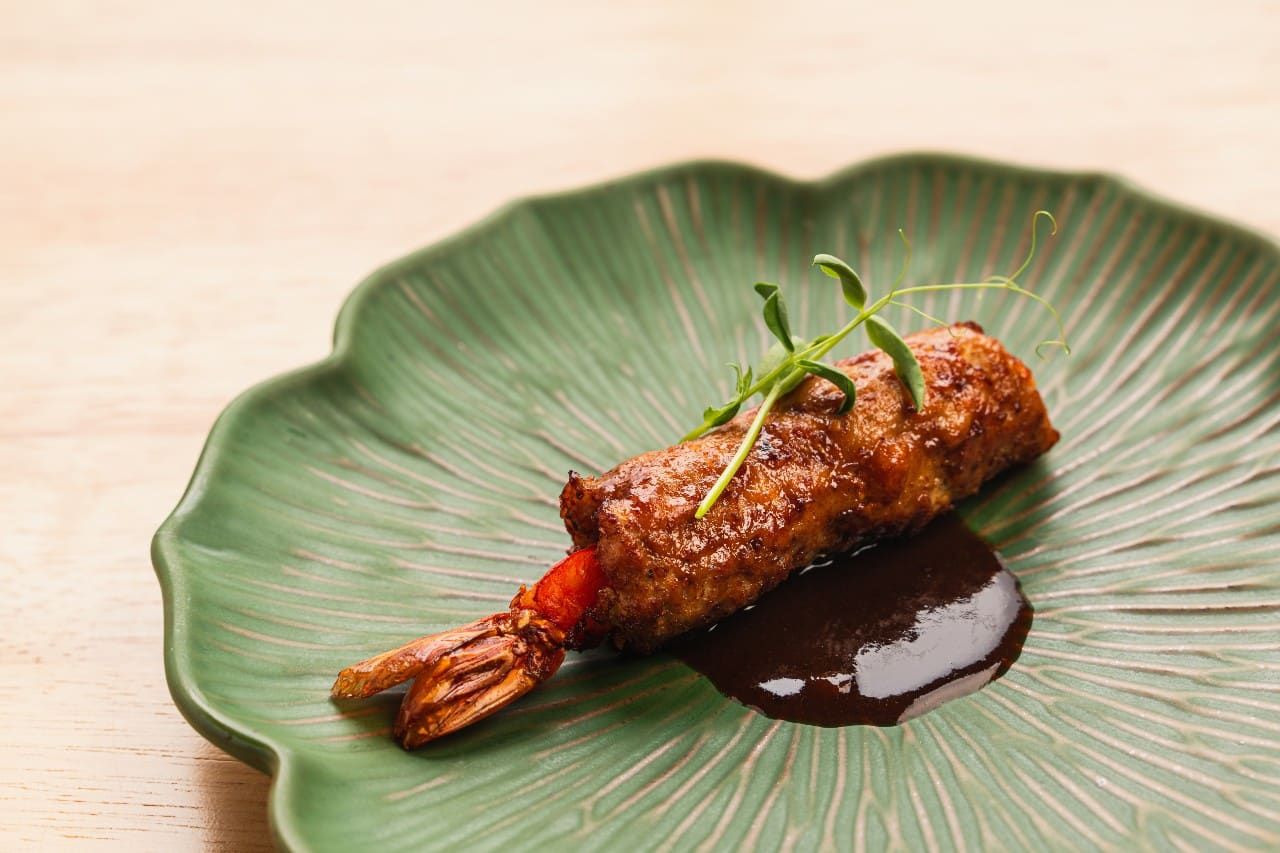
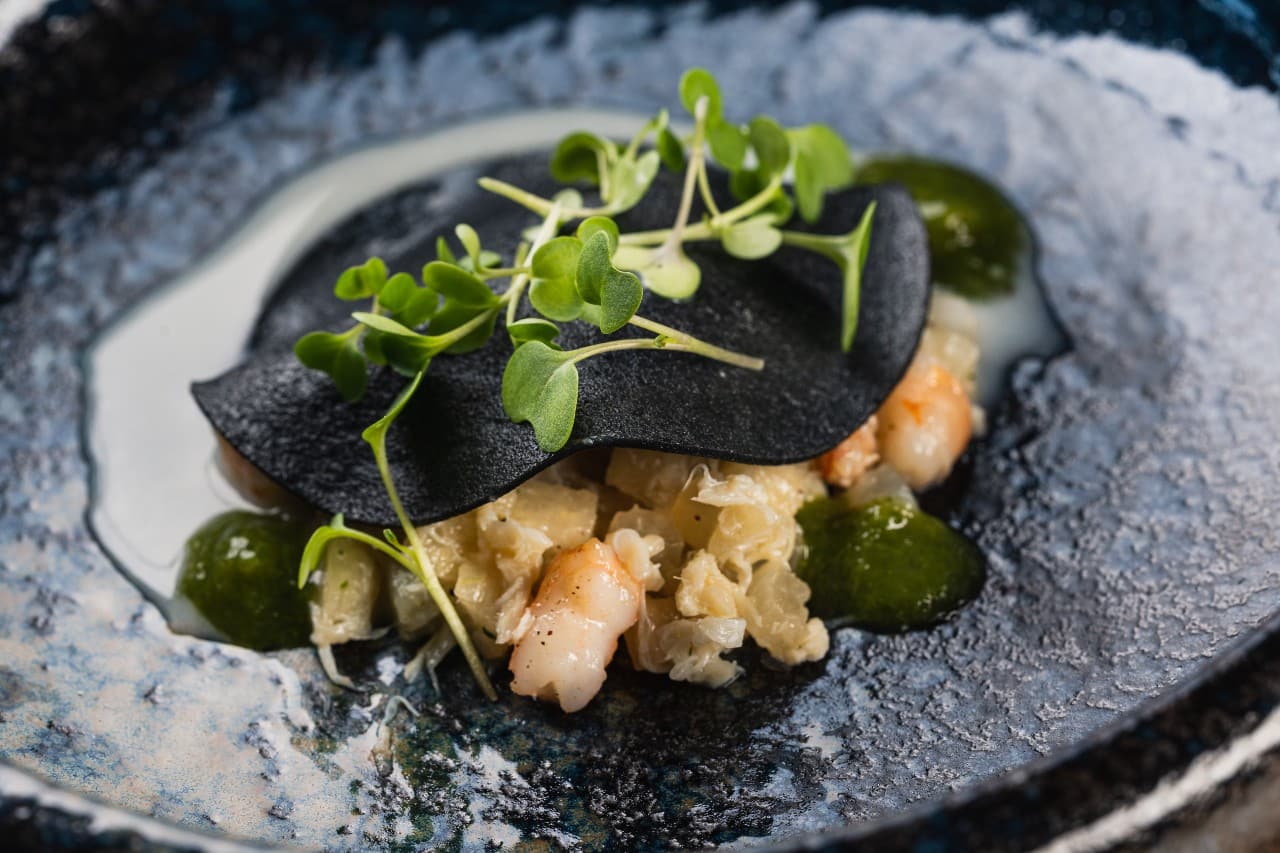
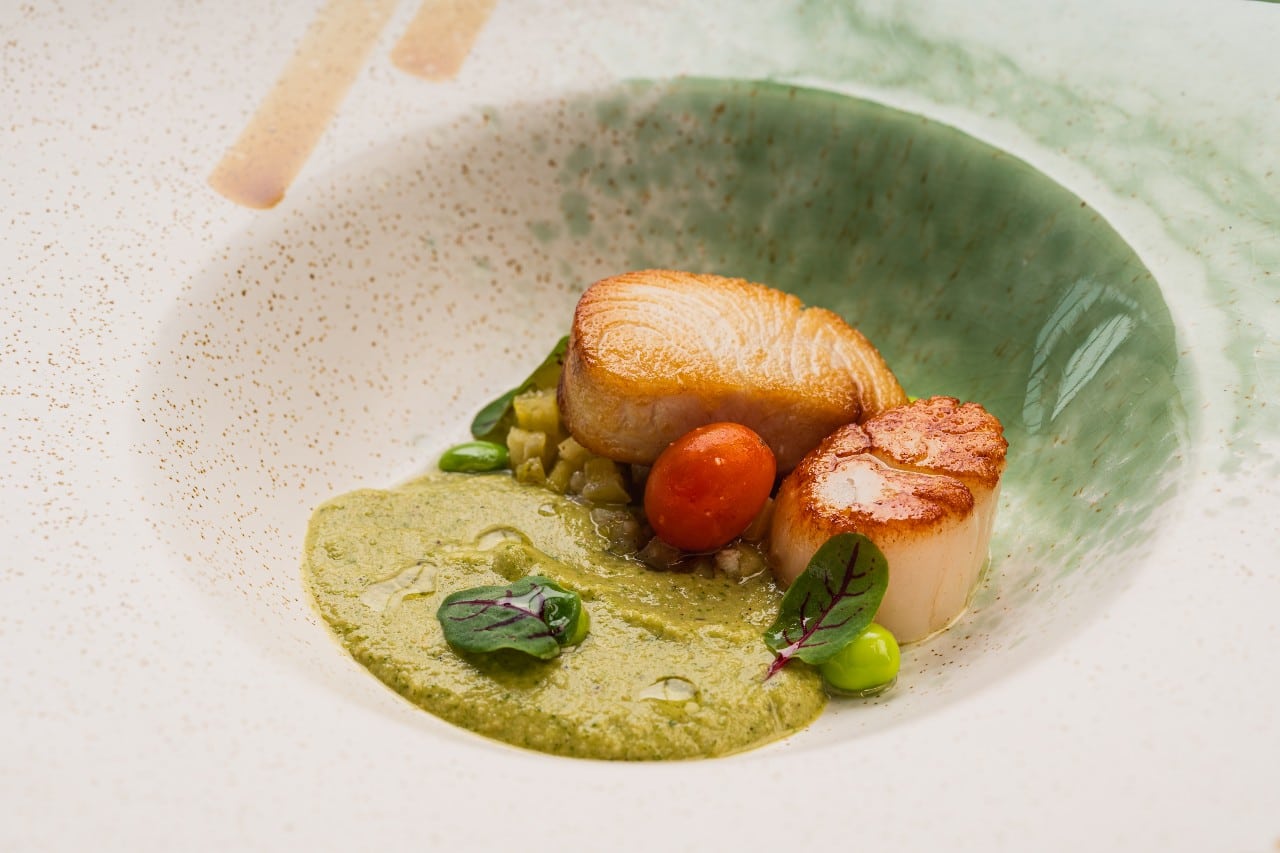
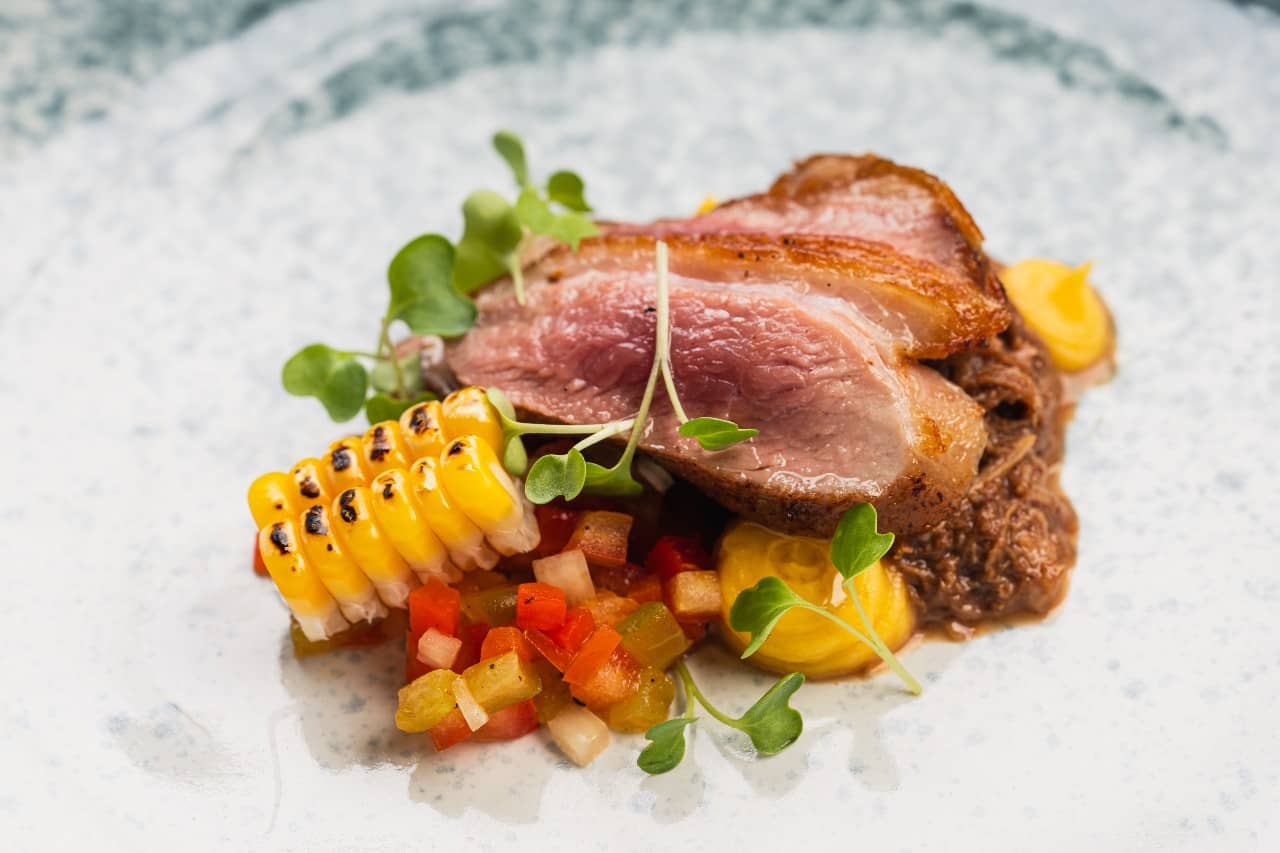
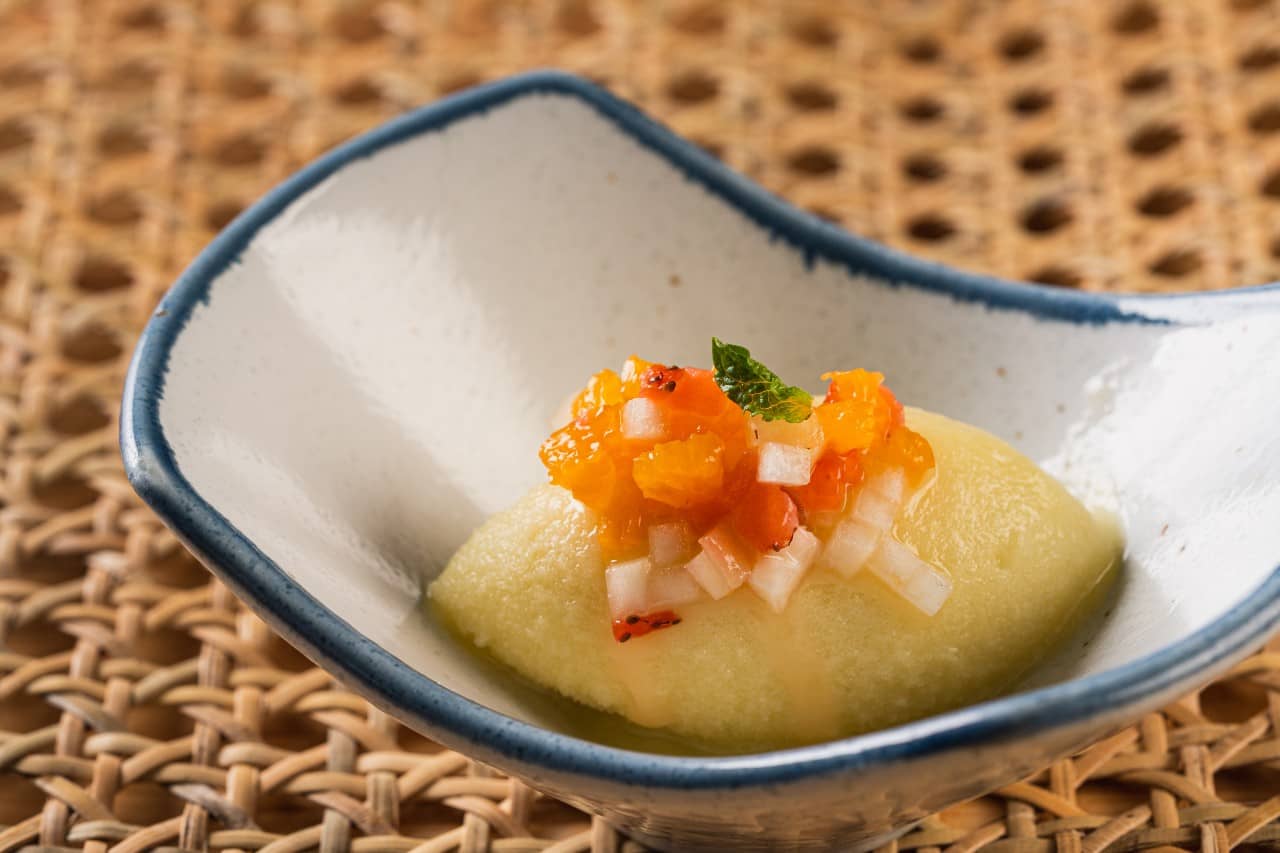
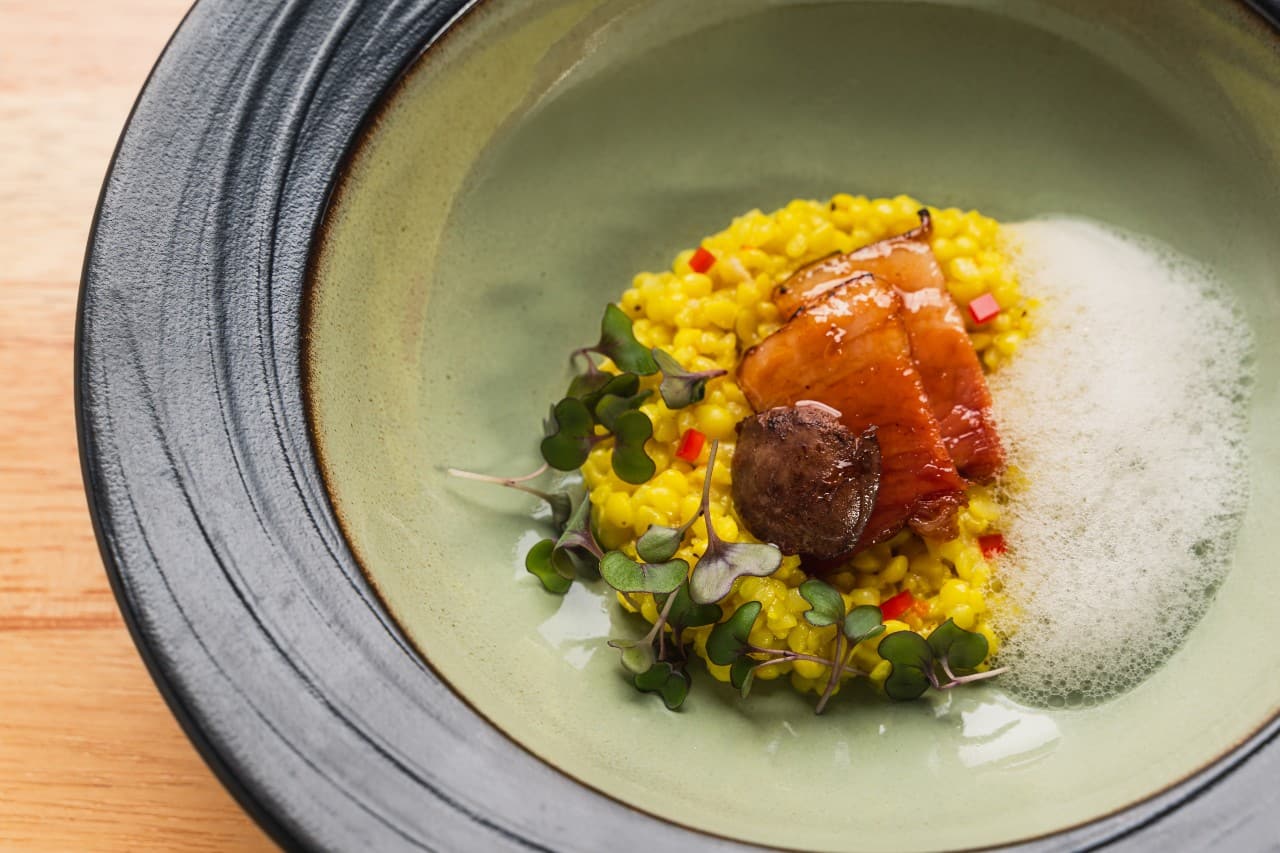
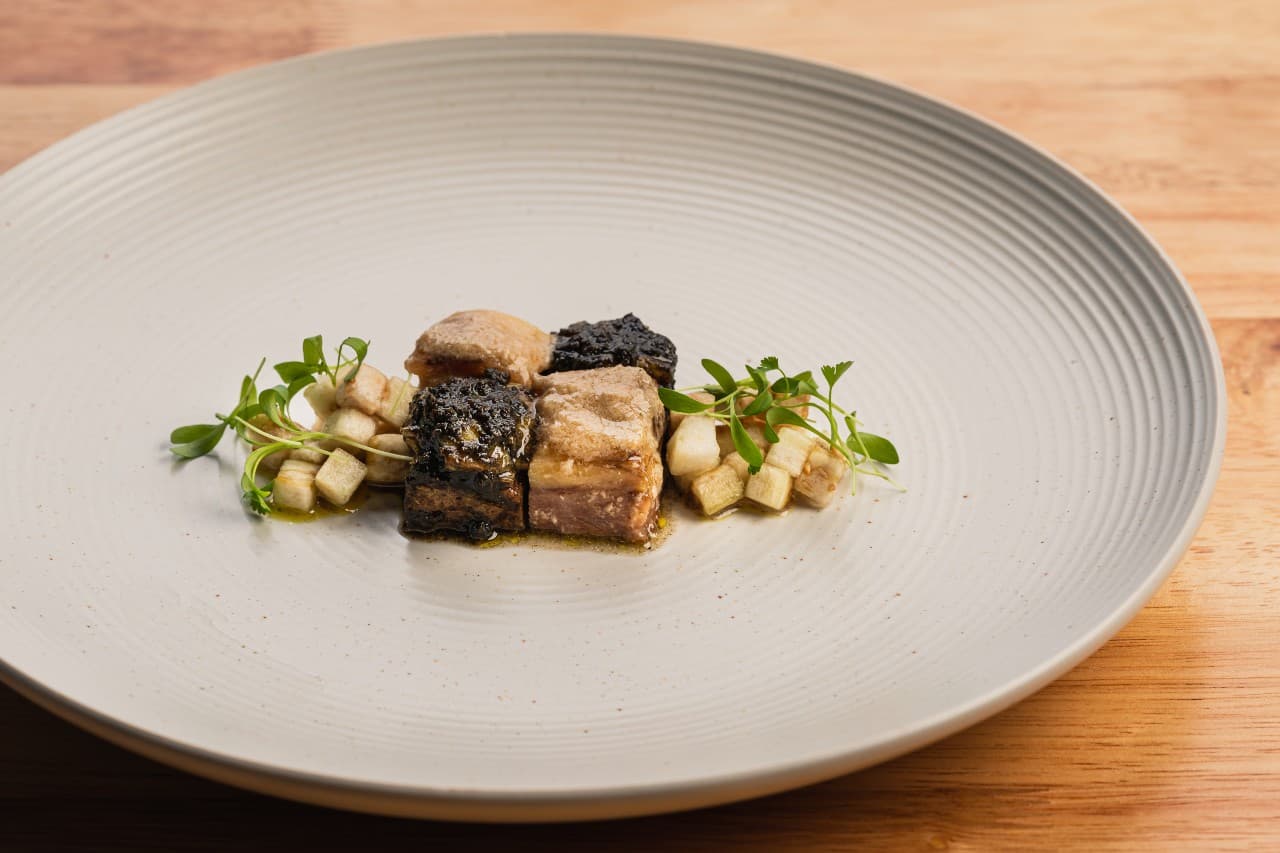
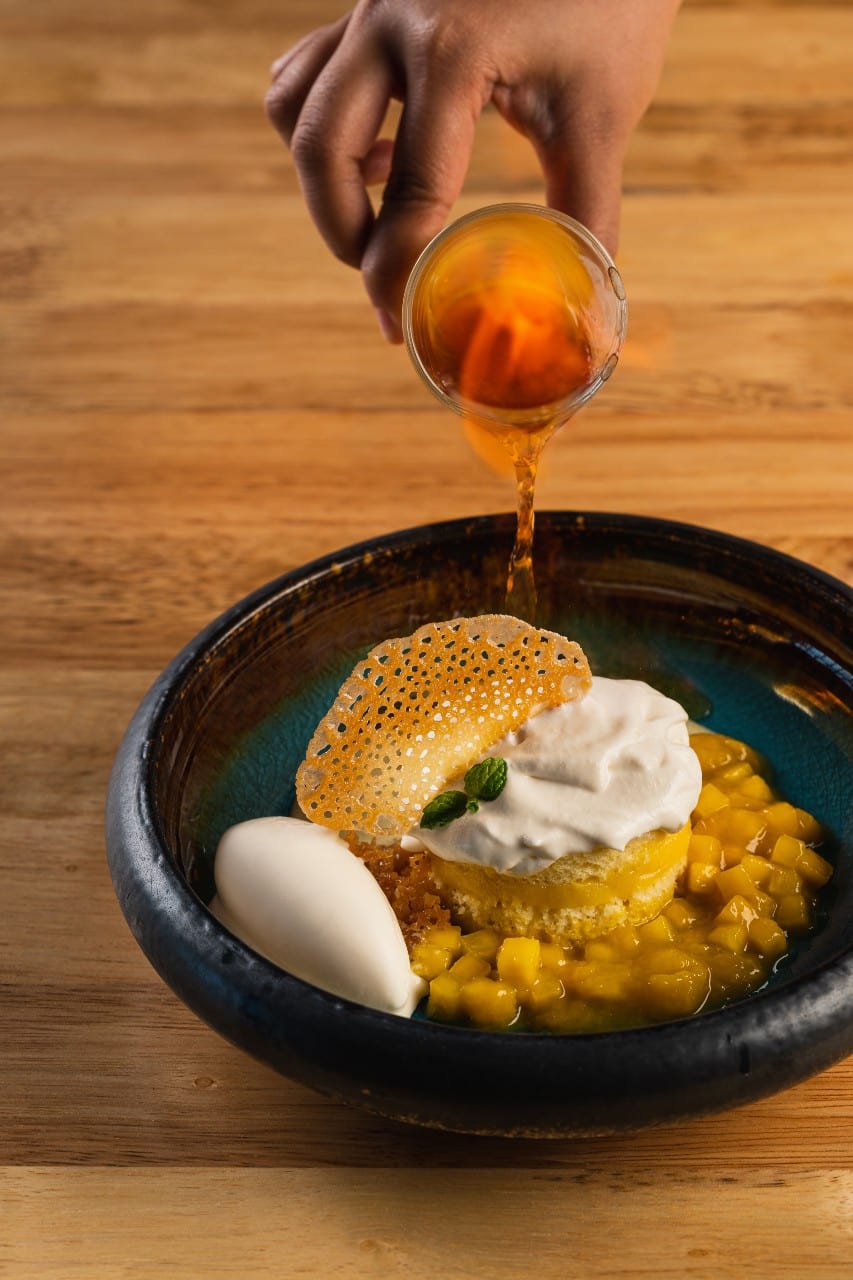
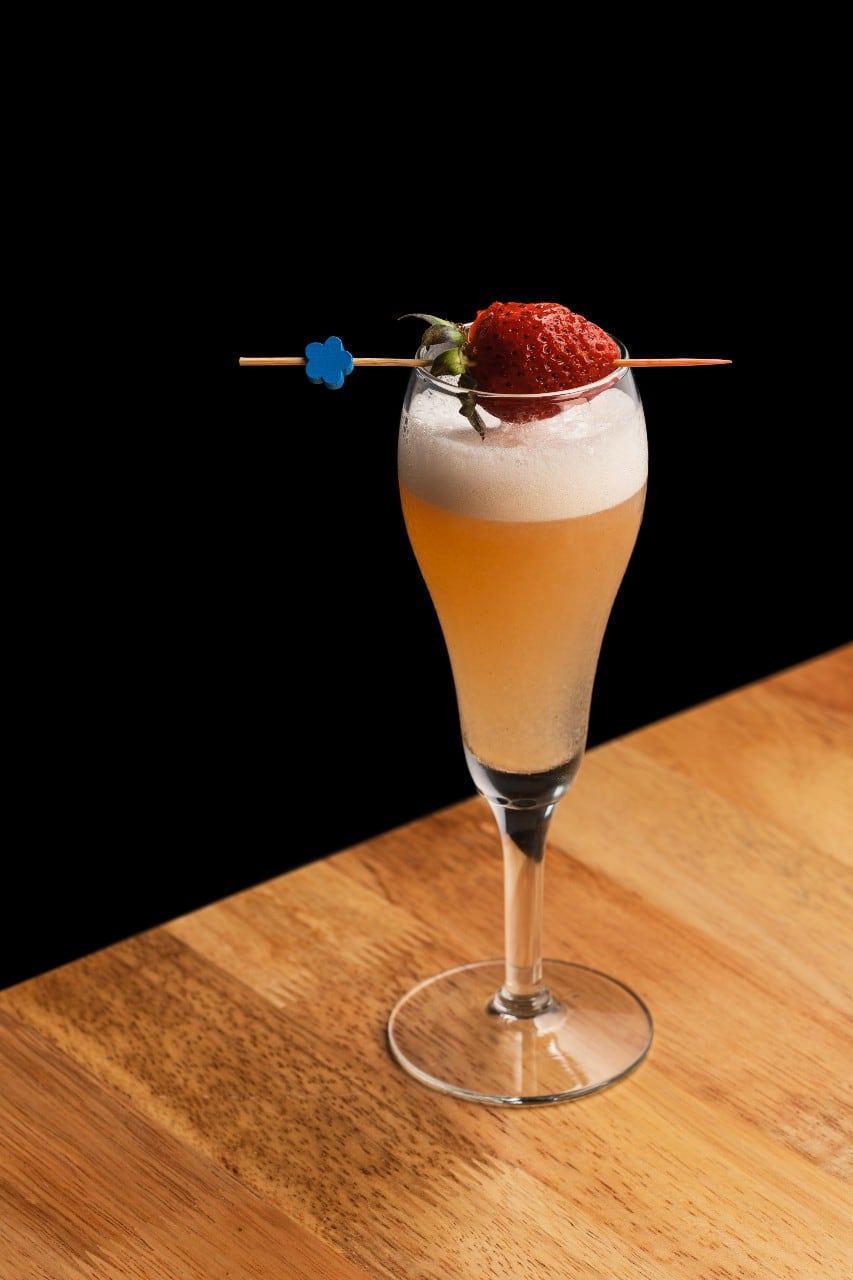
Chef Tatung - Chef Tatung Sarthou may be the most recognized (and busiest) chef in the Philippines today, running Pandan Asian Café in Quezon City and Tatung’s Private Dining in Antipolo. With Lore, he now adds fine dining degustation-only restaurant to his ever increasing list of accomplishments
Interiors - Lore keeps things casual yet festive, with an indoor gazebo, two private rooms, and an al fresco balcony that brings a bit of warmth and sunshine to its mall-based location
Sari-saring Palaman at Tinapay - Served with homemade pandesal, this array of Sari-saring Palaman or spreads—chunky chicken galantine with raisin jam, tangy calamansi mostarda, rich and creamy chicken liver pâté, and smoky umami-laden tinapa butter—tease the contrasts in texture and flavors to come in the succeeding courses
Kinilaw - Served in a shell atop ice, this elegant Kinilaw of raw tuna and sea urchin with pickled pineapple freshens the palate, with sweet potato strings as the perfect crunchy complement
Camaron Relyeno - Chef Tatung took inspiration from past visits to Chinatown, as he infuses five-spice into his Camaron Relyeno or sausage-stuffed prawn, and concocts the accompanying sauce out of pink-tinged haw candy, a classic Chinese sweet made from hawthorn fruit
Lumpia Fresca - Traditional Lumpia Fresca is reimagined as a delicate squid ink crepe over a generous mound of shrimp, crab meat and turnip. Instead of the usual sharp garlicky sticky sauce, this lumpia is refined with a subtler, and frankly much more pleasant white garlic sauce and cilantro gel
Mariscos con Sarsa Verde - Smoked hamachi and seared scallops elevate this Mariscos con Sarsa Verde inspired by the heritage cooking of Sulipan, Pampanga. Fresh and nutty, the accompanying sarsa verde references Mexican pipian, but using spinach, green tomatoes and almonds instead
Pato con Salsa Tsokolate - This standout Pato con Salsa Tsokolate traces its inspiration to a simple chicken recipe in the 1918 cookbook of Pura Villanueva Kalaw. The tablea sauce offers a savory almost buttery richness without overpowering the duck, while the grilled corn salsa brings a necessary brightness to the dish
Sorbetes - A welcome palate cleanser made with whatever fruits are available (mine was strawberry) is always served before the meat dishes
Bringhe - Traditional Bringhe is transformed into a multicolored, indulgent holiday dish that features local ham and seared foie gras on a bed of coconut-infused adlai, with clam foam lightening the calories. Somehow, all the seemingly disparate elements work their magic together
Moros y Kristianos - Slow braised till tender, beef short ribs are the backdrop to the provocatively named Moros y Kristianos. The dish is a spectacular clash of cultures and flavors—spicy smoked black and creamy white—with coconut as the unifying factor. The black sauce is based on the Tausug technique of burning coconut in charcoal to create an aromatic spice-laden sauce
Mango Jubilee - At first bite, this Mango Jubilee is instantly familiar, albeit more refined and not as cloyingly sweet as the classic restaurant dessert Filipinos know and love. Chef Tatung’s version is a more balanced affair with the addition of tres leches cake and lemon sabayon to complement the flambéed mangoes and vanilla ice cream
Halimuyak - Halimuyak is a refreshing and very drinkable (even at lunchtime) cocktail of gin infused in jasmine tea, with dalandan and strawberry, one of many signature cocktails offered as pairings to the tasting menus. Wine pairings are also available



